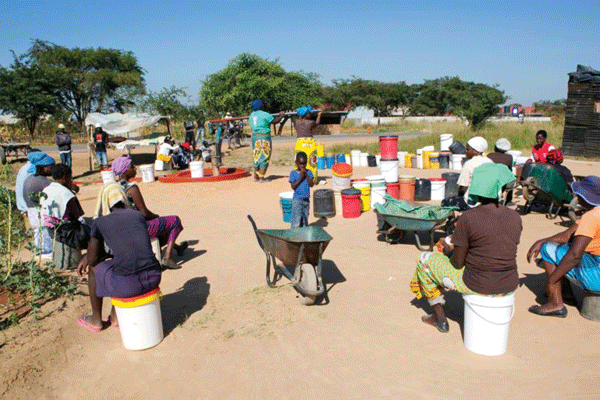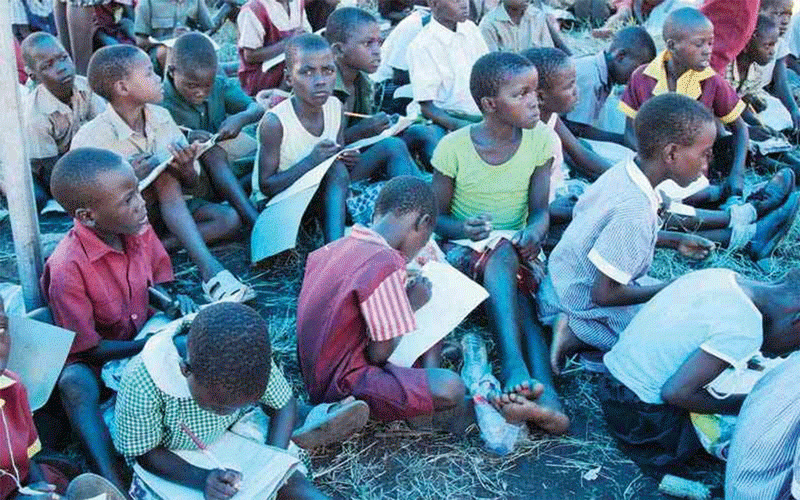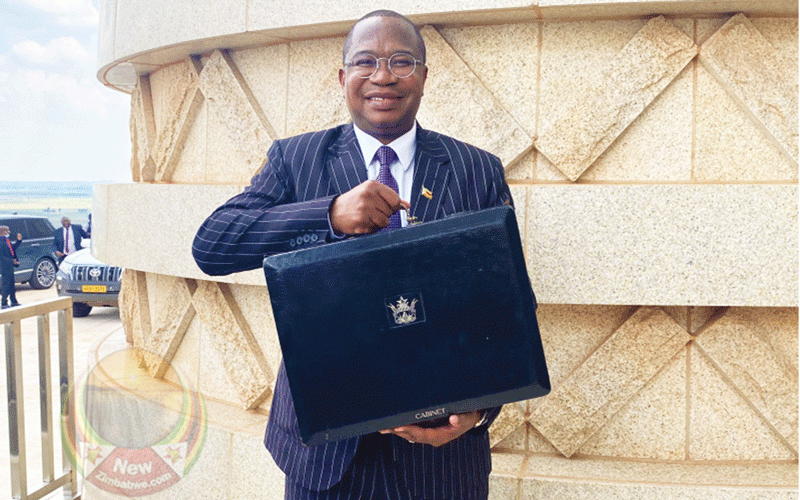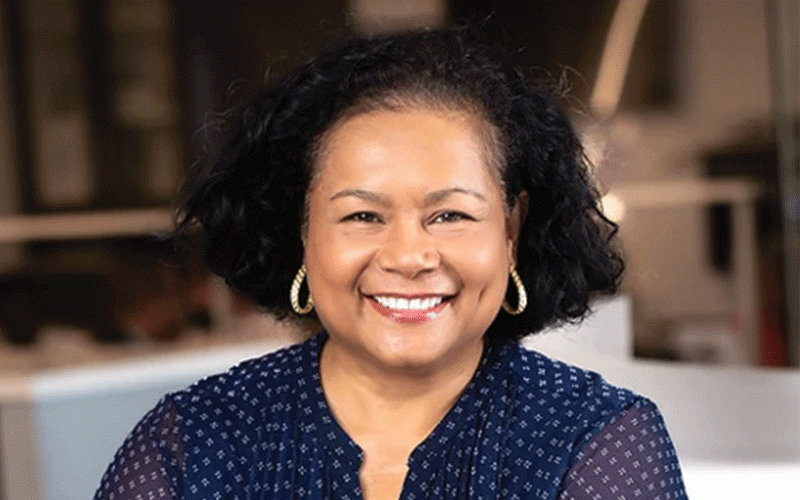
By Dumisani O Nkomo
The water crisis in Bulawayo epitomised by water rationing, cutting of water supplies and challenges of quality of water in places such as Luveve culminating in a number of deaths is not a new phenomenon.
I would like to argue that the Bulawayo water crisis is not just a crisis of lack of water but more importantly a crisis of leadership and a governance deficit at local and national levels.
The shortage of water has bedevilled the city since its establishment in the 19th century and the fact that Bulawayo is situated in natural region four means availability of water will always be a challenge as rainfall is scarce and erratic in this region. Absence of regular rains is never an accident, but rather more a permanent condition demanding permanent solutions.
Historical background
Bulawayo’s water problems dates back to when the British South Africa Company (BSAC) had jurisdiction over the country and indeed Bulawayo. Whether that jurisdiction was obtained legally or not is not the subject or object of this article. In 1898 the BSAC granted the Bulawayo Waterworks Company the authority to supply the town of Bulawayo with water and electricity on a commercial basis.
The ability of the waterworks company to meet the water needs of the growing town was severely constrained even after the company constructed Hillside Dam in 1898.
Residents of Bulawayo regularly complained about the waterworks company’s inability to supply clean and regular water.
- Chamisa under fire over US$120K donation
- Mavhunga puts DeMbare into Chibuku quarterfinals
- Pension funds bet on Cabora Bassa oilfields
- Councils defy govt fire tender directive
Keep Reading
The Hillside Dam was up to then the only supply dam for the city and in 1924 after a protracted legal battle, the dam was handed over to the Bulawayo Town Council after a sum of £117 000 had been paid to the waterworks company.
The history of different entities being in charge of water supply for the city is, therefore, not new. To their credit, colonial administrations built a number of other dams which are: Khami (1928), Lower Ncema (1943), Umzingwane (1956), Upper Ncema (1973), and Mayfair now known as Insiza Dam (1973).
Shockingly, colonial administrations built more supply dams for the City of Bulawayo than our own post-independent administration which only built Mtshabezi Dam in the 1990s — with the dam’s pipe only connected to the city in 2013.
We can thus infer that there was proper planning and allocation of resources in the pre-independence era for whatever reasons.
The five supply dams which were built prior to independence were built by the local authority i.e, the Bulawayo City Council (BCC).
We can draw various conclusions from this, but it is clear from this that the advent of centralisation and monopolisation of bulk water supply by the government of Zimbabwe has occasioned paucity of new supply dams and sources for the City of Bulawayo.
There were, however, pre-existing conditions which enabled the council to have both the will and capacity to build supply dams almost every 15 years, while the Zimbabwe National Water Authority (Zinwa) has built one new supply dam for the city in 40 years. Such factors may include the vibrancy of the national economy and broad local authority revenue base etc.
The problem
The Bulawayo water crisis is by nature multi-faceted and multi-dimensional but can be attributable to centralisation of bulk water supply, poor policy/legislative frame framework linked to the point above, lack of political will from government, misplaced priorities in budgetary allocations, failure by the local authority to provide leadership in distribution/billing of water and failure to develop an inclusive water governance framework at national and local levels which involves citizens and relevant stakeholders. This is not withstanding that the Zinwa Act envisages the creation of local catchment councils.
Let me briefly try and explain these assumptions which I argue are at the centre of our water conundrum and quagmire that we find the City of Bulawayo immersed in.
Centralisation
Centralisation of bulk water supply through the Zinwa Act was more of a poorly thought-out political strategy of social and political control rather than a prudent policy to deliver services.
The fact that government through its water flagship built one dam (Mtshabezi) over 40 years and the BCC built five dams is abundant testimony to this.
It can be argued that devolving of provision of water sources may cause administrative inefficiencies, but there is little empirical evidence to sustain this argument.
The fundamental assumption about local authorities being given the mandate to take over bulk water supply is that town councils, city councils and rural district councils have the requisite capacity to deliver on this mandate.
It is argued that this was possible previously because of the broad revenue base which, for example, the BCC had and a more conducive economic environment.
I still argue that centralisation especially of bulk water supply has been one of the most monumental policy failures of government which has contributed to the current water crisis.
Centralisation epitomises water governance failure by the government of Zimbabwe and exposes policy contradiction given the government’s posturing on devolution through its “Devolution and Decentralisation Policy” and importantly section 264 of the Constitution.
There is need to revisit the Zinwa Act and the Water Act to give expression to a policy framework which prioritises an inclusive policy and regulatory framework within a devolved system of local governance and service delivery.
The government has spectacularly let down Bulawayo by persistently and consistently failing to allocate adequate resources to address the city’s long-term water needs.
The Gwayi-Shangani Dam, which is expected to be the country’s third largest inland dam after Tugwi-Mukosi and Mutirikwi, is still incomplete even though a Cabinet implementation matrix had envisaged that the dam would be completed at the end of 2018.
The government now says the dam will be completed in 2022. While the coronavirus pandemic is a reasonable excuse for this, government’s tendency of shifting goalposts on issues of water for Bulawayo has eroded public confidence in any pronouncement or announcement it makes about delivery of long-term solutions for the city.
Who can forget the announcement by the authorities that US$864 million had been secured for the Zambezi Water Project in 2012 from the Export-Import Bank of China. The Gwayi-Shangani Dam and pipeline to Bulawayo were expected to be complete by 2018 according to government reports then.
Misplaced priorities and marginalisation
The founder of the Matabeleland Zambezi Water Project, the late Dumiso Dabengwa and the late great economist Eric Bloch, had argued that the Zambezi Water Project could be funded with little donor or government funding.
The Zambezi Water Project Trust sought to solicit a mining concession from the government to fund the water project. To cut the long story short, the trust was not granted that concession and funding for the project was sabotaged systematically.
Local authority
The Bulawayo City Council has historically excelled in managing scarce water through a cocktail of measures premised on long-term planning, stewardship and a reasonable billing regime. Lately, the council seems to be struggling in this regard and when the Luveve water crisis which claimed the lives of a number of people broke out the council regrettably did not provide leadership by at least apologising or taking responsibility. This was a very poor demonstration of leadership.
Leadership is premised on the fundamentals of vision, planning, acceptance of responsibility, servanthood and ability to communicate vision or challenges in a non-patronising manner.
The residents of Bulawayo are aware that the council is hamstrung by shortage of foreign currency and is wallowing in a financial quagmire accentuated by struggling residents who are failing to pay bills. What is required is for the council to step up and provide leadership on the water issue and not be the troglodytes that back off from responsibility.
Council must clearly articulate the importance of water for the development of the city and paint a picture of the Bulawayo that they and the residents are creating. A clearly defined and communicated vision will inspire residents to realise that paying bills is part of the bigger picture of a better Bulawayo.
Council needs to move away from a seemingly morose, taciturn and punitive manner of placing residents at the centre of the failure to deliver services due to failure to pay bills. The interaction of the council with ratepayers must not begin and end with cutting of water to residents or letters of demand and slashing of maize but should move to that of partnership, co-creation and co-ownership which requires shared responsibilities, rights and obligations by all.
Having said this there needs to be leadership at national and local levels in terms of the water crisis in Bulawayo. Bulawayo is the country’s gateway to South Africa, Botswana and Zambia and without water, the city will bleed to death. This will sound a death knell not just for Matabeleland region, but indeed, the whole country, given that the city is key as a transport hub for the country in the Sadc region
Fundamental changes to the policy and regulatory framework need to be made to devolve provision of bulk water supply. This must be done in a systematic and structured manner, not in the usual fast-track manner as this could create new problems of lack of capacity and lack of financing by local authorities.
This process must be well-planned, phased, systematic and structured, providing a roadmap for the overhaul of the Zinwa Act, the Water Act, the Urban Councils Act and related Acts.
There also must be a sound framework for private-public partnerships which will facilitate investment in water infrastructure development through build-own-operate-transfer and build-own-operate models.
This will assist in injecting private capital into water projects and infrastructure. The policy framework must ensure that water is still accessible and affordable to citizens.
A water financing strategy must be developed at municipal level in anticipation of a devolved water distribution dispensation which gives councils the mandate to provide bulk water through building dams and sourcing water from aquifers.
This will require a well-thought-out local economic blueprint for Bulawayo which unlocks multiple revenue streams for the city beyond bills paid by residents.
Bulawayo will not die!
Masiyephambili.











